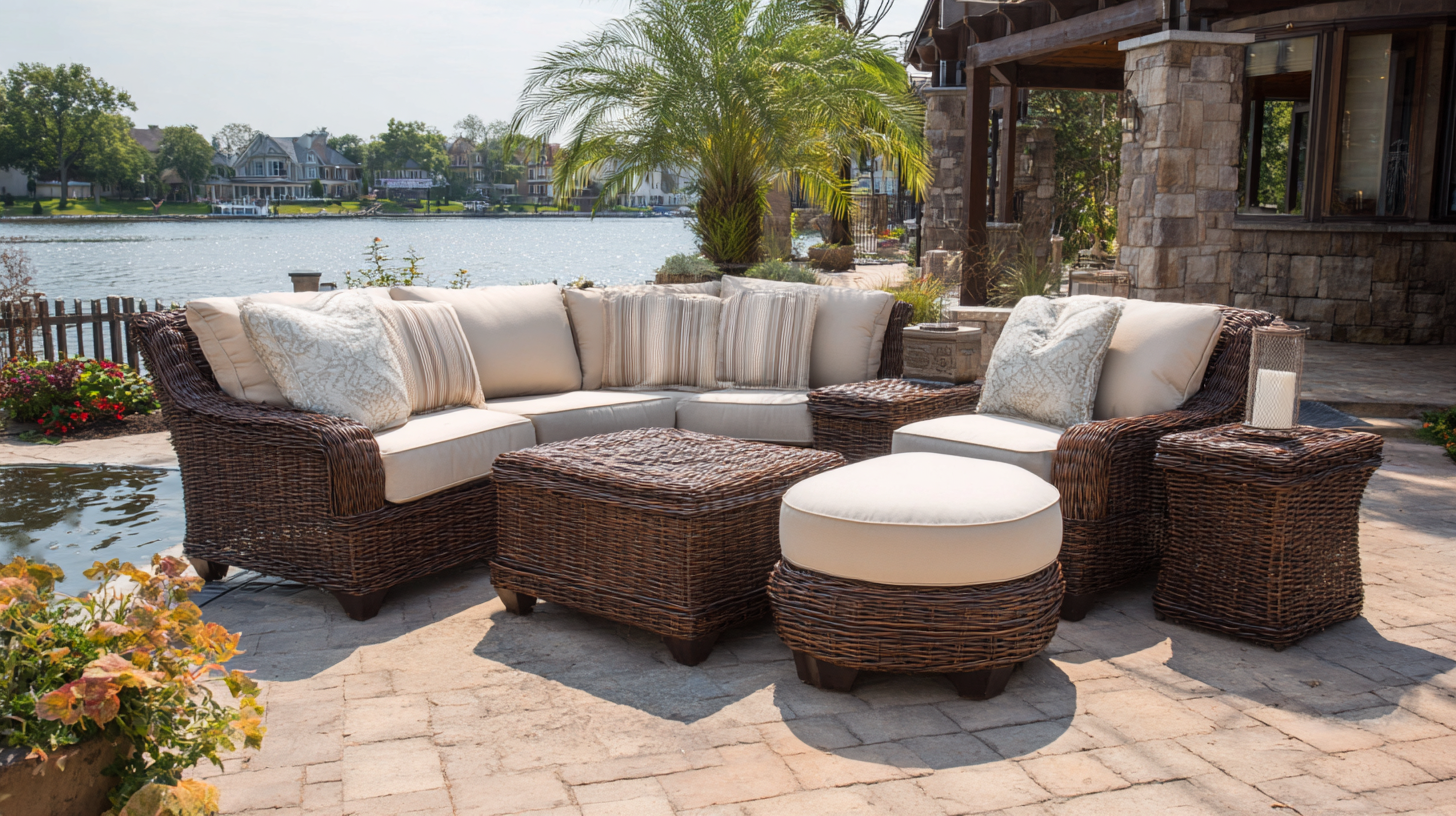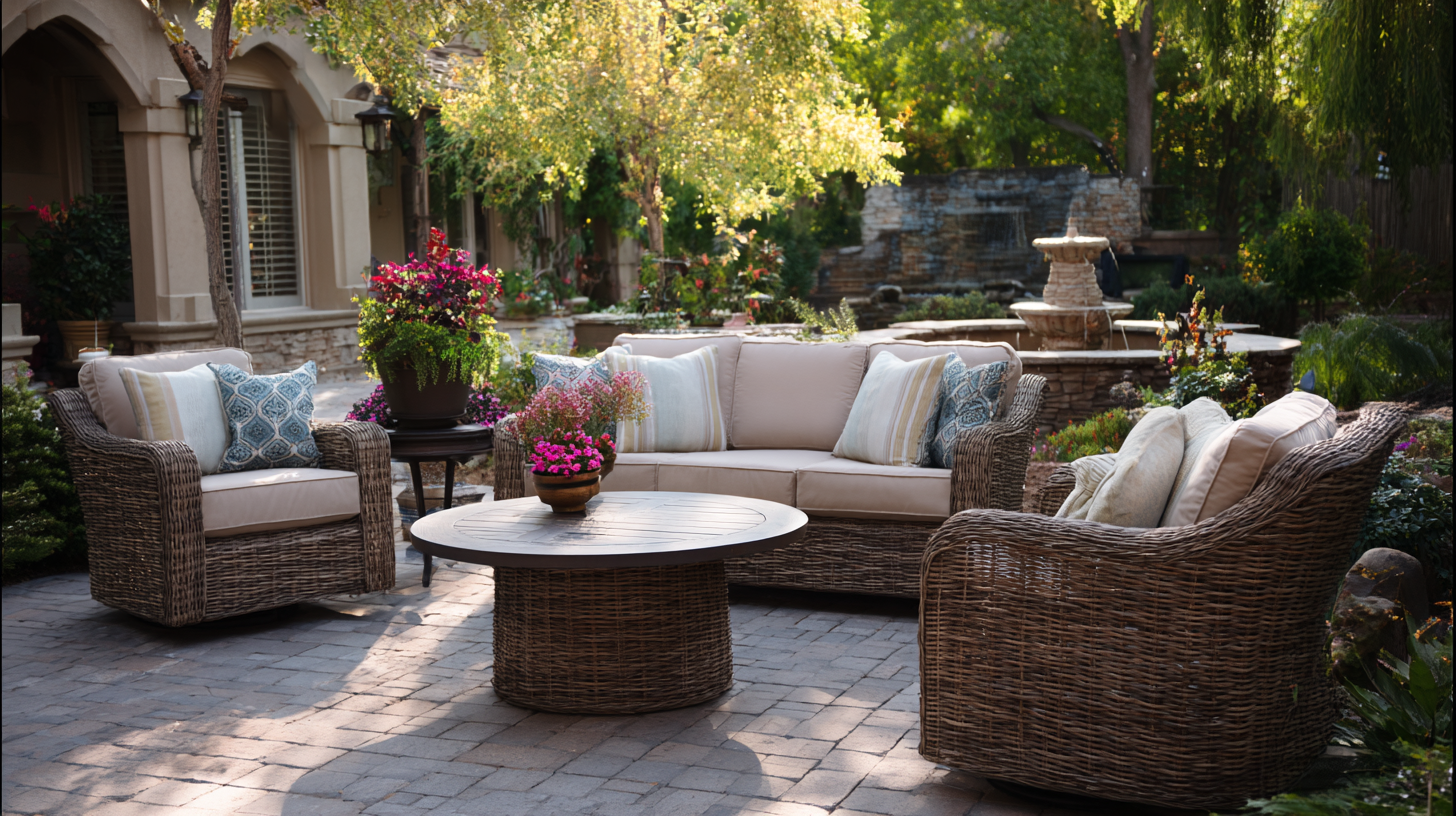Setting the Benchmark: Industry Standards for Best Wicker Patio Furniture Production
In recent years, Wicker Patio Furniture has gained immense popularity, becoming a staple option for outdoor living spaces. According to a report by the Furniture Retailer Association, the demand for
high-quality patio furniture has seen a 25% increase in the last five years, driven by consumer interest in durability and aesthetic appeal.
As outdoor areas become extensions of the home, the standards for production are evolving.
With the rise of eco-conscious consumers, manufacturers are now challenged to adopt sustainable practices and superior materials that ensure longevity while maintaining visual charm.
This blog will explore the benchmarks of industry standards in the production of Wicker Patio Furniture, providing insight into the key elements that contribute to quality, design, and environmental responsibility in today's market.
Understanding Wicker Patio Furniture: Composition and Materials
Wicker patio furniture has emerged as a popular choice for outdoor living spaces, thanks to its blend of aesthetic appeal and durability. Understanding the composition and materials that go into producing high-quality wicker furniture is essential for ensuring longevity and comfort. Traditional wicker is made from natural rattan, a plant vine that is lightweight yet sturdy. This material not only provides flexibility and strength but also has a beautiful natural finish that can enhance any patio setting.
In recent years, synthetic materials such as resin and polyethylene have gained popularity in the production of wicker furniture. These materials offer enhanced resistance to weather, fading, and pests, making them ideal for outdoor use. They mimic the appearance of traditional wicker while providing the added benefits of easy maintenance and increased durability. Furthermore, advancements in technology have led to the development of high-quality synthetic options that are environmentally friendly and recyclable. By understanding the composition and materials used in wicker patio furniture, consumers can make informed choices to create a stylish and sustainable outdoor living space.
Key Factors in Crafting High-Quality Wicker Furniture
Crafting high-quality wicker furniture involves several key factors that can significantly influence both durability and aesthetics. First and foremost, the choice of materials plays a crucial role. High-quality wicker is often made from synthetic fibers that mimic natural rattan but offer superior resistance to weather and UV rays. This ensures that the furniture can withstand the elements without fading or deteriorating over time, making it ideal for outdoor settings.
Another essential factor in the production of wicker patio furniture is the construction technique. Skilled artisans often weave the materials tightly to create a robust structure that enhances longevity. Additionally, attention to detail in the finishing processes, such as applying protective coatings and ensuring smooth edges, elevates the overall quality. These elements not only contribute to the furniture's durability but also enhance its visual appeal, making it a stylish addition to any patio or garden.
Investing in these key production aspects ensures that outdoor wicker furniture remains both beautiful and functional for years to come.
Examining Durability: Weather Resistance in Wicker Designs
When it comes to selecting wicker patio furniture,
durability is a paramount consideration.
The key to longevity lies in understanding how different materials resist
weather conditions. According to the 2022 Outdoor Furniture Durability Report,
high-density polyethylene (HDPE) wicker has proven to be
20% more resistant to UV rays and moisture
compared to traditional rattan. This enhanced weather resistance not only extends
the aesthetics of the furniture but also ensures its structural integrity over time.

Furthermore, the same report highlights that furniture with a protective UV coating
can withstand extreme weather changes, lasting up to 10 years
in harsh climates. This is crucial for homeowners, especially in regions that
experience significant seasonal fluctuations. Investing in products that are
designed to endure such conditions means less time spent on repairs and replacements
and allows for greater peace of mind, knowing that your outdoor space will remain
inviting year after year. By understanding these standards, consumers can set a
benchmark for quality when it comes to wicker patio furniture production.
Sustainability in Production: Eco-Friendly Wicker Options
As consumers become increasingly conscious of their environmental impact, the demand for sustainable wicker patio furniture has surged. Eco-friendly wicker options are not only aesthetically pleasing but also contribute to a healthier planet. Manufacturers are now exploring innovative materials, such as recycled plastics and sustainably sourced rattan, to create their products. These alternatives not only maintain the traditional charm of wicker but also provide long-lasting durability, reducing the need for frequent replacements.

In addition to material choices, sustainable production practices play a crucial role in minimizing the ecological footprint of wicker furniture. Companies are adopting energy-efficient manufacturing processes and implementing waste reduction strategies to ensure their operations are as eco-conscious as possible. For instance, some manufacturers are utilizing water-based finishes and non-toxic adhesives to enhance the sustainability of their products. By choosing wicker patio furniture produced with these eco-friendly techniques, consumers can indulge in stylish outdoor living while supporting environmental responsibility.
Industry Certifications: What to Look For in Furniture Standards
When purchasing wicker patio furniture, understanding industry certifications is crucial to ensure quality and safety standards are met. Certifications provide valuable insights into the materials and manufacturing processes used in production. Look for certifications from recognized organizations such as the American Standards for Testing and Materials (ASTM) or the International Organization for Standardization (ISO). These certifications ensure that the furniture is tested for durability, safety, and environmental impact, giving you peace of mind in your investment.
Additionally, consider certifications that focus on sustainable practices, such as the Forest Stewardship Council (FSC). Furniture meeting these standards not only offers quality but also aligns with eco-friendly values, ensuring that materials are sourced responsibly. Brands that obtain these certifications signify a commitment not just to craftsmanship, but to the preservation of the environment. By prioritizing furniture that meets these industry certifications, you can feel confident that your wicker patio furniture will stand the test of time while adhering to responsible production practices.

Home
About Us
Products
Engineering Case
Buyer Service
News
Blog
Contact Us




